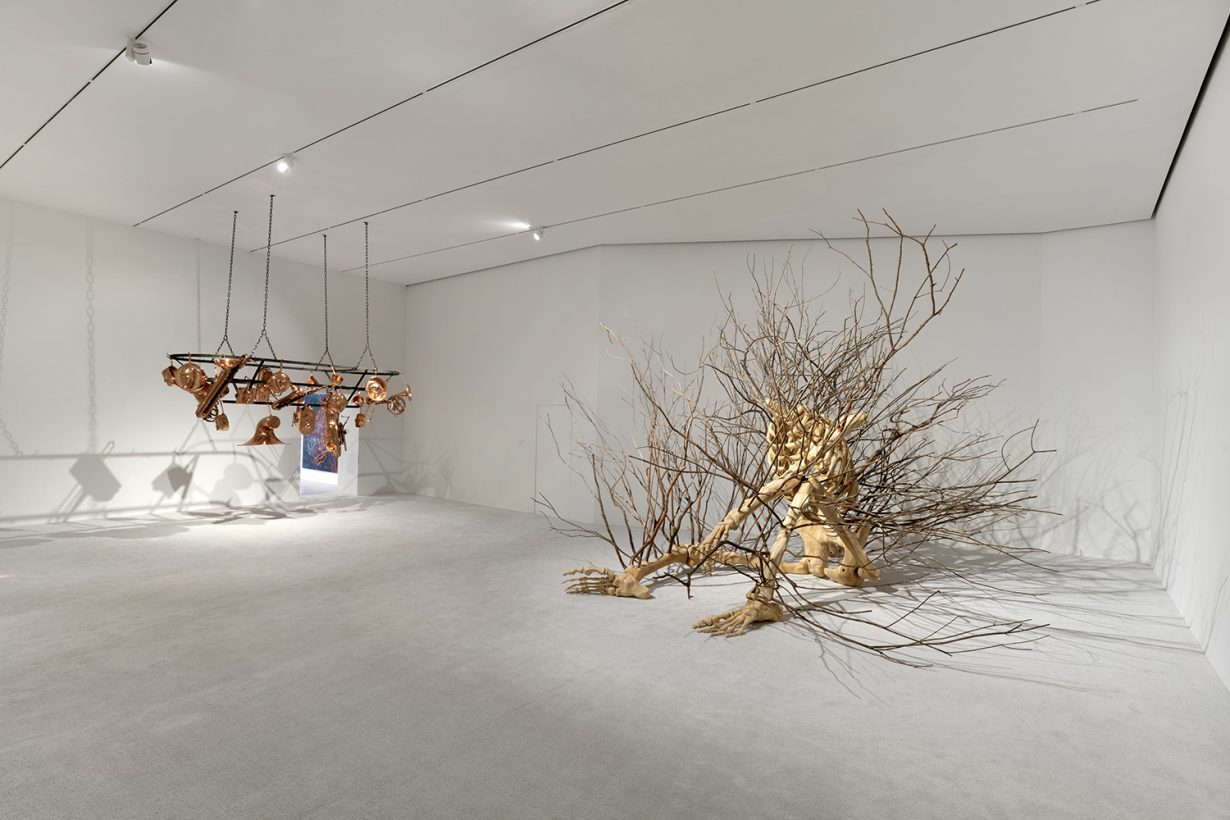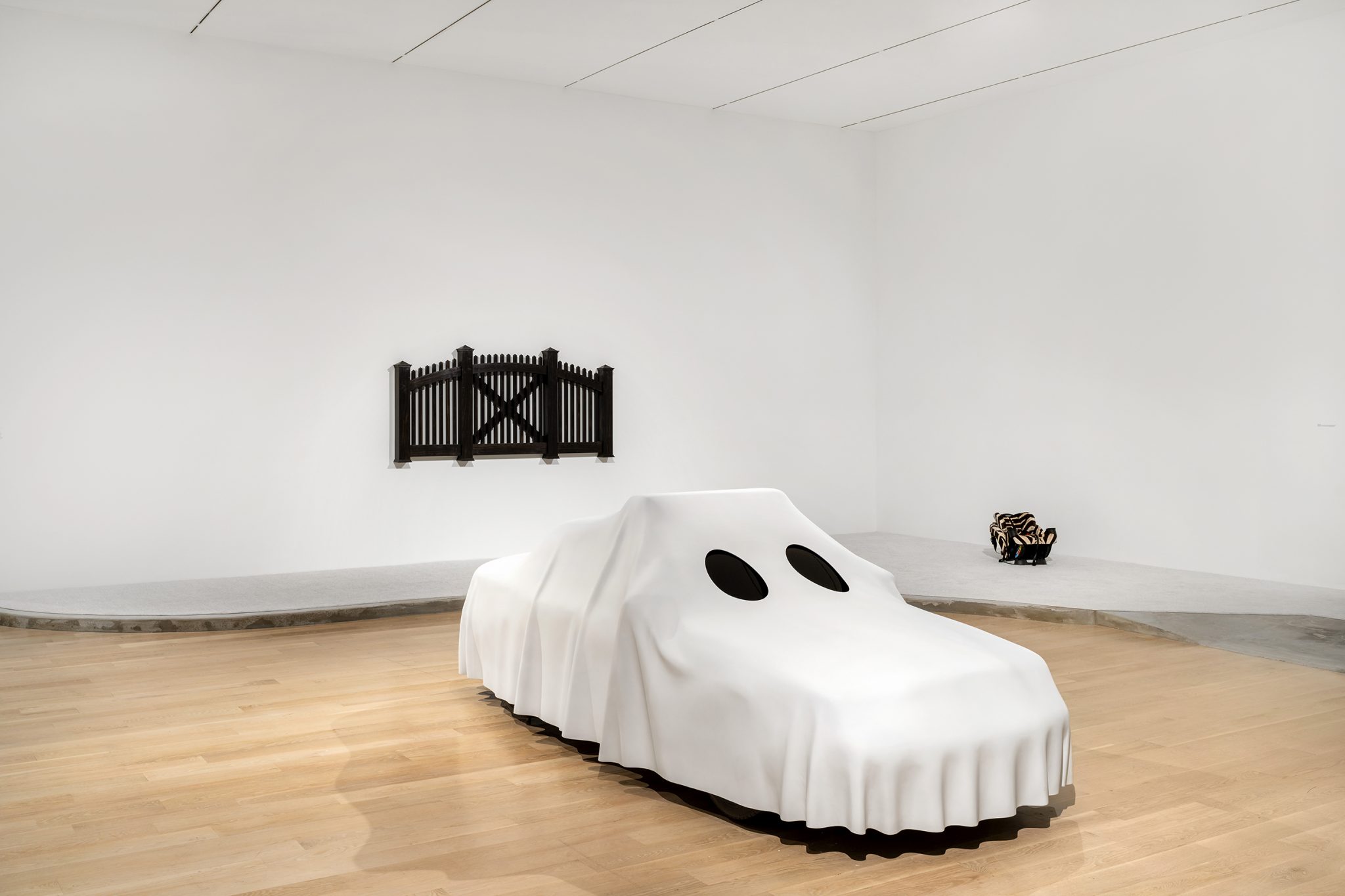The artist tempts viewers with the reveal, but never discloses who, or what, exactly, is under the hood
There’s a poetic moment – philosophical, even – at the end of every Scooby-Doo episode. The gang hogties a ghost, a demon or some other ghoul, and in an instant shucks their hood or mask to ‘reveal’ the ne’er-do-well, and their ruse. The supernatural immediately becomes profane; mystery solved. Hugh Hayden’s Boogey Man (all works 2021), the centrepiece of this exhibition, revels in the tension of the reveal – that moment in art when the artist’s material or conceptual sleight-of-hand presents itself to enchant viewers.
Boogey Man is a bedsheet-bedecked cop car, three-quarter-lifesize and fabricated in steel. The hooded chariot equates the brutalities of the American police state and the Klan, but there’s a goofy softness to the work thanks to the hammered and painted metal of the bedsheet. Evoking Guston’s bumbling Klansmen, Hayden’s use of a diminutive scale, rounded edges and big cartoonish eyes (dark mirrored pools, like little Gerhard Richter paintings) defangs the subject’s nefariousness. Yet this is a sinister caricature, and the baroque drama of matt drapery morphs into a skin of whiteness, the power that enables this ghost to diabolically hover. Hayden tempts viewers with the reveal, but never discloses who, or what, exactly, is under the hood.

Courtesy the artist and Institute of Contemporary Art, Miami
The idea of skin shapes many of the objects in Hayden’s Boogey Men, and he nimbly works between the mass-produced and the handmade. Example: a car seat, called Pride, reupholstered with zebra pelt, becomes an assisted readymade of sorts – alluring and soft, black and white – and sits across from High Cotton, an arched section of fencing, deftly hewed from Gabon ebony. The latter work emphasises simple elegance, like the works of Martin Puryear. Skin defines the experience of America one can have; materials become skins that define objects.
A lush expanse of grey carpet fills the exhibition’s second room, becoming a decisively domestic stage on which the exhibition is set. A larger-than-life skeletal figure, Nude, carved from cedar, genderless and without attributable race, sprouts a host of branches. Vertebrae lurch forward, the being seated in repose and emitting a sense of prickly unease. The French phenomenologist Maurice Merleau-Ponty once said that painting can break ‘the “skin of things” to show how things become things’. Hayden’s sculpture pursues this endeavour.
Hugh Hayden, Boogey Men
Institute of Contemporary Art, Miami, until 17 April
